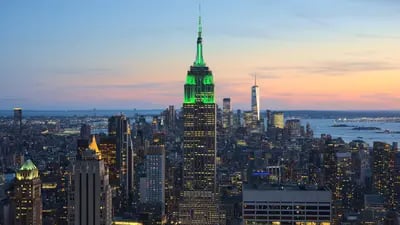Destination Not Found
Sorry, we couldn't find information for "Yala". Please check the spelling or try searching again.
Explore All DestinationsPerhaps you were looking for:
![Best time to visit Paris, France - [b]Spring[/b], from [b]April[/b] to [b]June[/b], o](/_next/image?url=https%3A%2F%2Fbesttimestovisit.nyc3.cdn.digitaloceanspaces.com%2Fimages%2Fparis-france%2FLa_Tour_Eiffel_vue_de_la_Tour_Saint-Jacques__Paris_ao_t_2014__2_-400.webp&w=3840&q=85)
Paris, France
[b]Spring[/b], from [b]April[/b] to [b]June[/b], offers an inspiring Paris experience, with the city awakening under gentle sunshine and blooming gardens. Imagine strolling along the Seine as the morning mist gives way to bright skies, or enjoying the vibrant energy of bustling markets filled with fresh produce. The [b]summer months[/b] of [b]July[/b] and [b]August[/b] are warm and lively, perfect for al fresco dining and soaking in golden sunsets from Montmartre. For a more serene visit, the [b]autumn months[/b] of [b]September[/b] and [b]October[/b] provide crisp air and stunning fall foliage, making museum visits and quiet café moments particularly inspiring.
![Best time to visit Rome, Italy - For an elegant Roman holiday, aim for [b]April-Jun](/_next/image?url=https%3A%2F%2Fbesttimestovisit.nyc3.cdn.digitaloceanspaces.com%2Fimages%2Frome-italy%2FTrevi_Fountain__Rome__Italy_2_-_May_2007-400.webp&w=3840&q=85)
Rome, Italy
For an elegant Roman holiday, aim for [b]April-June[/b] or [b]September-October[/b]. During these months, the air carries a gentle warmth, perfect for strolling through cobblestone streets as the scent of blooming jasmine fills the air. Imagine savoring a gelato under the soft glow of [b]spring[/b] or [b]autumn[/b] sunsets, with fewer crowds allowing for a more intimate experience of ancient wonders. The [b]summer[/b] heat gives way to pleasant breezes, making exploration of bustling piazzas and historic sites a truly refined pleasure, far from the intense [b]July[/b] and [b]August[/b] sun.

London, UK
For a truly dynamic London experience, aim for the vibrant stretch of [b]late spring[/b], specifically [b]May and June[/b]. Imagine the city awakening with blooming flowers in Hyde Park and the air alive with the buzz of outdoor cafes and bustling markets. The longer daylight hours are perfect for exploring iconic landmarks without the deep chill of [b]winter months[/b], and you'll catch the city in a lively, energetic mood before the peak summer crowds arrive. Alternatively, the crisp air and festive spirit of [b]November and December[/b] offer a different, yet equally dynamic, charm with twinkling lights and cozy pubs.
![Best time to visit Barcelona, Spain - [b]Spring[/b], particularly from [b]April[/b] to [](/_next/image?url=https%3A%2F%2Fbesttimestovisit.nyc3.cdn.digitaloceanspaces.com%2Fimages%2Fbarcelona-spain%2FAerial_view_of_Barcelona__Spain__51227309370__edited-400.webp&w=3840&q=85)
Barcelona, Spain
[b]Spring[/b], particularly from [b]April[/b] to [b]June[/b], offers a truly captivating experience in Barcelona. Imagine strolling through blooming parks under a gentle sun, the air alive with the scent of orange blossoms, before the summer crowds arrive. The city hums with a vibrant energy, perfect for exploring Gaudí's architectural wonders without the intense heat. Later, the [b]early autumn[/b] months of [b]September[/b] and [b]October[/b] continue this charm, with warm evenings ideal for savoring tapas outdoors as golden sunsets paint the sky, and the sea still inviting for a refreshing dip.

New York City, USA
For an exhilarating New York City experience, aim for [b]late spring[/b], specifically [b]May and June[/b], when the city truly blossoms. Imagine strolling through Central Park under a canopy of fresh green, the air alive with the sounds of street performers and the scent of blooming flowers. Alternatively, the crisp air of [b]autumn[/b], from [b]September to October[/b], offers a different kind of thrill, with golden light illuminating iconic skyscrapers and the energy of a city gearing up for the holidays. Both seasons provide a vibrant, yet comfortable, atmosphere for exploring everything from bustling markets to world-class museums.
![Best time to visit Tokyo, Japan - For a truly stunning Tokyo experience, aim for [b]](/_next/image?url=https%3A%2F%2Fbesttimestovisit.nyc3.cdn.digitaloceanspaces.com%2Fimages%2Ftokyo-japan%2FSkyscrapers_of_Shinjuku_2009_January-400.webp&w=3840&q=85)
Tokyo, Japan
For a truly stunning Tokyo experience, aim for [b]spring[/b] ([b]March[/b] to [b]May[/b]) when the city awakens under a canopy of delicate cherry blossoms, painting the parks in soft pinks and whites. Alternatively, the crisp air of [b]autumn[/b] ([b]September[/b] to [b]November[/b]) offers a stunning spectacle of fiery red and golden foliage, perfect for strolling through ancient gardens or enjoying the vibrant energy of bustling street markets. While [b]summer[/b] can be warm and humid, it bursts with lively festivals, and the [b]winter months[/b] offer a serene beauty with fewer crowds and the chance to witness stunning illuminations.